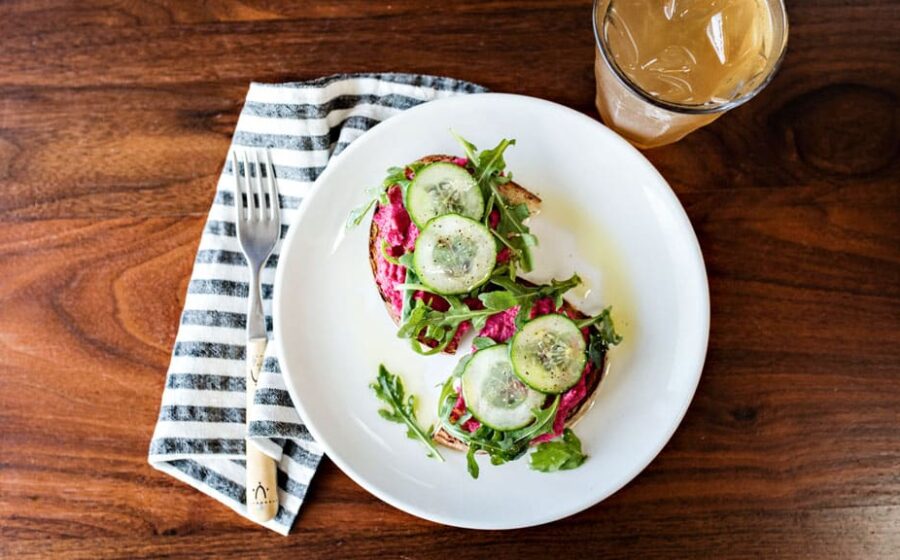[W]hen coffee is the only thing on your menu, the prospect of adding food is daunting. Toast offers an approachable route to building a food menu that’s simple, plates beautifully, and tastes great. Especially for cafés with limited space for prep, equipment, and ingredient storage, toast can be the answer to offering a sophisticated dish without a sophisticated kitchen. We’ve compiled tips from toastmasters around the country to help you get started.
Note: Toast is certainly not the only way to add food to your menu, but it’s a great starting point for those wanting to create something in-house. If your idea of avocado toast is slapping some guacamole on a slice of Wonder bread, you might want to consider some of the other food options, like those we’ve presented on page 30.
1) Take time to choose your bread. Bread is, after all, the foundation of toast; choosing the right ingredient platform is crucial. See what’s available through local baking partners and sample each option—plain, toasted, and with ingredients. Just because a bread tastes great on its own doesn’t mean it will complement the ingredients you have in mind.
2) Think about thickness. There’s nothing worse than limp toast. How thick does your bread need to be to support your avocado, marinated goat cheese, and olive oil creation? Many bakeries will pre-slice bread, but it may not be as thick as you need. If so, how will you slice the bread in-house to ensure uniform thickness? Pro tip: be sure that whatever size you choose fits in your toaster.
3) Keep it crispy. Toast is not toast without crunch. Blue Bottle’s executive chef Scott Boggs shares this insider tip: “Hold the bread for twenty seconds after toasting. This lets the bread release steam, keeping the crispiness.”
4) Keep it simple. Develop your menu around toasts that are delicious and easy to assemble. Don’t overcomplicate your combinations for the sake of being overcomplicated. A rye toast topped with cream cheese and black pepper is one of the menu stars at the Mill in San Francisco.

5) Think through the steps. How long does each toast combo take to make? What can be done ahead of time? Assess ingredients from an operational standpoint to determine if a toast combination makes sense with your staff and kitchen setup.
6) Think outside the avocado box. Toast is a blank canvas begging for creativity, so take license to play with flavor combinations that excite you and your staff. Jason Reed Miller of Mazarine Coffee says, “If it sounds interesting and tasty to the curator of the toppings, it’s a go.”
7) Source good products. Apply the same principles to food as you do sourcing your green coffee. Develop and maintain good relationships, and seek products that are delicious, well crafted or grown, and sustainable. Quality ingredients pack more flavor, plate better, and share a story about your vendor partnerships.
8) Consider eatability. There’s nothing wrong with a thick, hearty toast, but will customers be able to cut through it? You may need to provide a serrated knife alongside the toast.
9) Set price strategically. Costing food products is not nearly as fun as creating them, but it can make the difference between profit and loss. How many slices of bread can you get from a loaf? How much more will it cost to use avocado slices rather than a mash? Calculate a toast’s cost before determining price.
10) Be flexible. You need to be excited about your menu, but so do your customers. Be willing to make adjustments if things aren’t working. If your caramelized onions are creating a bottleneck in daily prep, consider an alternative. If customers aren’t ordering your artisanal cured ham with house-made berry preserves, don’t be offended; create something new.
—Ellie Bradley and Rachel Sandstrom Morrison are Fresh Cup‘s editor and associate editor.
























